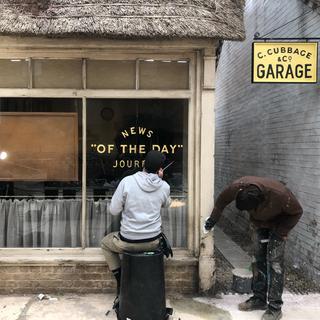


The forgotten art of sign painting is reviving French streets
NewsOnce a defining feature of shopfronts in the early 20th century, sign painting had gradually disappeared. Today, a new generation of artisans is bringing the craft back to life, driven in part by the surge of food and beverage establishments thriving in cities.
"There's painting with the little finger, with a maulstick or with crossed hands – these are the three techniques I use to paint freehand," explained Victor Bert between brushes on his workbench and his pots of acrylic and glycerol. His name probably doesn't ring a bell, but you may already have come across his work. The façades of the Hôtel Le Moulin in Lourmarin, the family-run Maison Jouvaud pastry shop in Carpentras – both in southern France – as well as chef Manon Fleury's Datil restaurant in Paris, have all been touched by his brush. At 32, this self-taught sign painter is helping to breathe new life into a technique that had largely fallen out of use at the end of the 20th century.
"In France, sign painting appeared around 1830, with the rise of retail, and enjoyed its golden age in the first part of the 20th century," he explained. "It gradually disappeared between the 1980s and the 2000s," overtaken by new technologies and digital printing. Worse still, the craft no longer even features in the list of official arts and crafts established by a 2015 decree.
Over time, stickers and self-adhesive vinyl pushed traditional sign painting further into obscurity. This was until the end of the Covid-19 crisis, when it enjoyed a surprising rebound. "Everyone became passionate about craftsmanship," said Bert, who has been in the business for 11 years and whose order book continues to fill up. "At the peak of my business last year, I sometimes did seven jobs in the same week."
You have 80.17% of this article left to read. The rest is for subscribers only.
